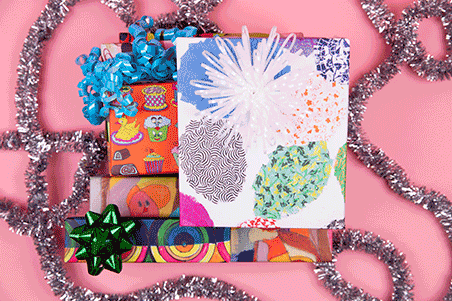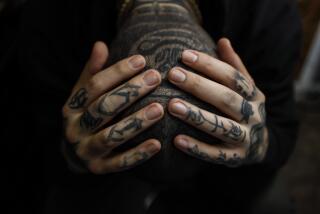The Art of Character Building
- Share via
With each brush stroke, calligraphy artist Yoshiko Kyokudo Brown tries to lose herself in her work.
“They say they can tell when you’re drawing or writing, how you felt,” Brown said.
The goal in the traditional Japanese art is to erase those feelings--only through the elimination of one’s self can a perfect work of calligraphy be attained.
It’s a goal Brown can embrace as she returns to an art she abandoned years ago.
Brown, a part-time hairdresser who has lived in Oxnard for 20 years, first studied calligraphy as a child in Japan.
“At that time I didn’t care for it, because everyone else was playing and I had to go to the class,” she said.
A few years ago, Brown picked up her brushes again to make a sign for her karaoke singing. She enjoyed it so much that she decided to return to the art form that had been forced upon her as a child.
Last fall, her work earned her a silver award in a competition sponsored by the Japanese American Cultural and Community Center in Los Angeles’ Little Tokyo.
Every summer, more than 500 artists from North, Central and South America submit their work to the center. The center mails the entries to Japan for review by expert judges, who award grand, gold, silver and bronze citations.
The characters in Brown’s award-winning piece represent an ever-changing crowd. The translation is roughly equivalent to “impermanence,” Brown said. She is preparing to submit new entries in July.
Calligraphy competitions fall into A, B, C and D categories. The A category is for top artists who want to submit original poems or designs; the D category is typically reserved for children.
Brown competes in the B category, which means she attempts to replicate one of a dozen designs approved by calligraphy masters each year.
Calligraphy can be a study in repetition. Again and again, Brown traces the bold, black characters on thin, white paper.
“It’s really nice for the concentration,” Brown said. “Sometimes I write 50 or 60.”
She first rubs her ink stick, called a sumi, into the palette and adds water to create the dark mixture. She dabs one of a dozen brushes of different thicknesses into the ink and rolls the bristles until they form a narrow point.
Then the brush hits the paper. She tries to let her strokes flow naturally until she is pleased with her design.
“Each time it comes kind of different,” Brown said.
To avoid distractions, she prefers to work early in the morning or late into the night. She keeps her brushes moving in fluid motions without harsh starts and stops. Once a month, she attends a class taught by a master calligrapher from Seattle, but she also learns from her fellow students.
“I see so many new ways to move the brush,” she said.
Calligraphy has been practiced for centuries, said Hirokazu Kosaka, gallery director of the Japanese American center.
Once artists successfully eliminate their own egos from their work, the drawing becomes second nature, Kosaka said.
“This is a part of life,” he said. “It’s like brushing your teeth.”
Each November the center hosts an exhibit of the year’s top artwork. The Japanese judges do not necessarily select winners based solely on the quality of the work or how faithfully it replicates the characters, Kosaka said.
“Most of the judges have attained a certain degree of enlightenment,” he said.
As the art of calligraphy passes from generation to generation, so does an element of Japanese culture, Kosaka said.
“When I see a Western painting, it tells me who they are,” he said. “When I see calligraphy or Japanese paintings, they tell me who I am.”
More to Read
The biggest entertainment stories
Get our big stories about Hollywood, film, television, music, arts, culture and more right in your inbox as soon as they publish.
You may occasionally receive promotional content from the Los Angeles Times.










